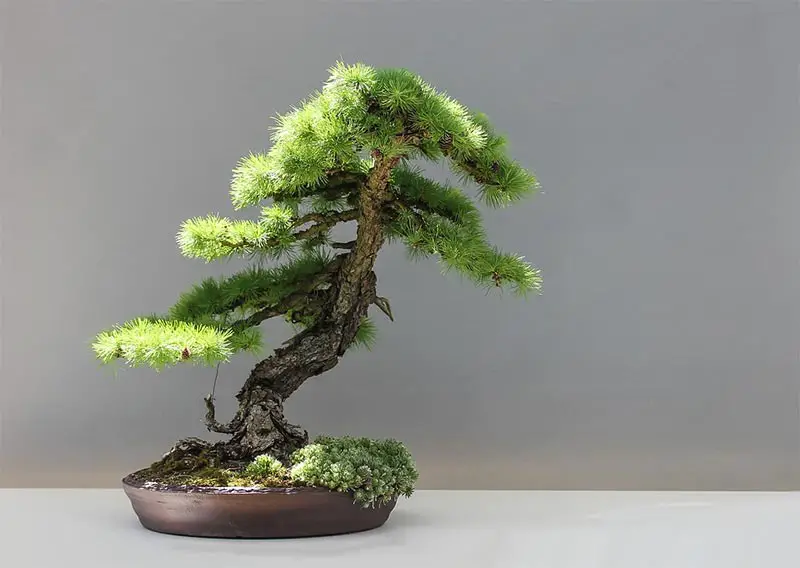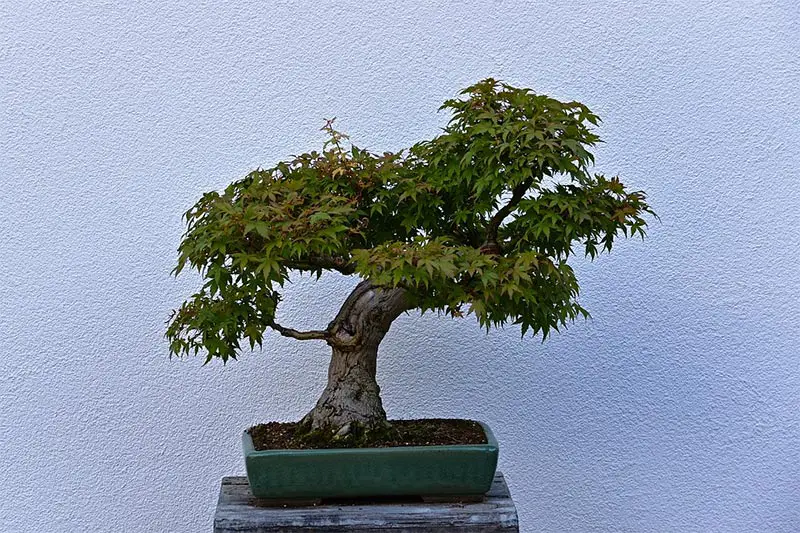How do You Know When Your Bonsai Tree is Dying?
It’s easy to mess up the growing state of your bonsai trees, especially if you’re a new carer. The great news is trees don’t just die in one go; you’ll start to notice some changes, and there’ll be a chance to bring your tree back to life.
However, it’s not so difficult to pick out signs that your bonsai tree is dying, and if you notice these symptoms earlier, you can prevent them and protect and restore the health of your trees.

The Stages of Dying in Bonsai Trees
The dying process differs depending on the type of species your tree is. Bonsai like Japanese Maple and Chinese Elm are deciduous trees, and their dying process starts with the leaves going down. The foliage will slowly drop off, followed by the smaller branches.
As time progresses, the bigger branches will begin to die, and after that, you’ll notice the trunk withering. Finally, the roots of your tree will start to rot.
Conifers will die from the roots first going up. The roots will begin to rot, the stem and branches, and finally, the foliage will start to fall off.
Signs That Your Bonsai Tree is Dying
With a better understanding of the dying stages, here are a few signs you’ll need to look out for on your bonsai trees.
Scratching the Bark
You can do a simple finger test to check your tree’s health, especially in winter when plants are dormant. Explore towards the root, and scratch the bark of your tree to see a green cambium. This is an indication that there is still hope to revive your tree.
If ever the cambium is grey or brown, then your tree may be dead. Sometimes the branches die from the tip. In this case, scratch your branches from the top to the tip. Remove the affected part for a better chance for your tree to heal.
Discoloration of Leaves
Observe the appearance of your leaves to see signs of illness. Your trees could be exposed to multiple diseases like leaf spots. Check for any spottings or forms of discoloration. The affected leaves will usually be in clusters. Remove the affected leaves immediately.
On deciduous plants, the discoloration can be caused by overheating of the trees by the sun. The leaves will start to dry up, turning to a yellowish color, and eventually fall off. However, in Conifers, you’ll notice the green leaves slowly turning to a pale color that looks like a fading green. Many reasons could cause this, but the main one could be that your tree doesn’t receive enough light.
Brittle Leaves and Branches
Another great sign of a dying tree is the texture of the foliage and the brittleness of the leaves. Conifers can keep that foliage soft and green throughout the year, including during the dormant season. When your tree is dying, your leaves and branches move from dull and pliable to brittle and easily breakable. So crisp and discolored leaves could indicate that your plant is underwatered or does not receive enough light.
Deciduous trees first lose color on the foliage before they become brittle. Losing leaves is normal during winter, but if this happens outside of the season, it could signify that something is wrong.
Observe the Roots
Often people put more focus on trimming the leaves of their trees and leave the roots unattended. This makes these roots grow out of control and be too much for the pot to contain. This uncontrolled growth leads to root rot as the roots do not receive enough aeration. You’ll notice a weird rot smell if you take a sniff at the soil.

Tips to Revive Your Bonsai Tree and Avoid its Demise
Sometimes the best solution is to remove the affected part. This method prevents the illness from spreading to the rest of the tree and causing more damage. At other times, the dead barks are not such a bad thing.
You can still keep your tree even when the bark has developed some white parts. This can serve as the decorative design of your tree. Some Japanese maples are displayed like that in other parts of the world for design effects.
Although your bonsai could have signs that it’s still dying, it can still show signs of life, which is good news. Simple keep your plant damp until the foliage starts to grow green again. You will need to position your tree at the brightest spot but keep it out of direct sunlight.
We have a detailed bonsai tree care guide with all the relevant information. Check the guide out here!

In cases where your tree’s foliage has wholly dried and wilted (if it is not the dormant season), then putting your tree in water for ten minutes could be a great solution. Put the tree until the water covers the entire root, then after removing the pot, continue watering, as usual, keeping the soil damp.
When your tree is already dry, don’t try to counter this by overwatering; it will cause more damage. In fact, if your tree is shedding its leaves, it may need less water as this could mean that it is not transpiring.
Another best solution is misting. Misting means spraying your tree with liquid particles that will create moist, cloud-like conditions around your tree, especially if your trees are in a grow-room or greenhouse. Misting will increase the levels of humidity around your plants and assist in speeding up the recovery process.

Conclusion
Growing a bonsai tree can be tricky for first-time carers, especially if you do not know the correct conditions to grow your trees. However, finding out that your tree may be dying or is dead should not discourage you. Bonsai tree dying happens often; so instead, you can learn from your previous mistakes and start again.
It should be easier the second time. Although your tree could be indicating that it is dying, hope is not all lost as it can still be recovered. Foliage drying up and branches becoming more brittle could signal that your tree is sick, so first analyze what could be the underlying cause, be it a disease or pest infection. From there on, it should be easier to find solutions.







